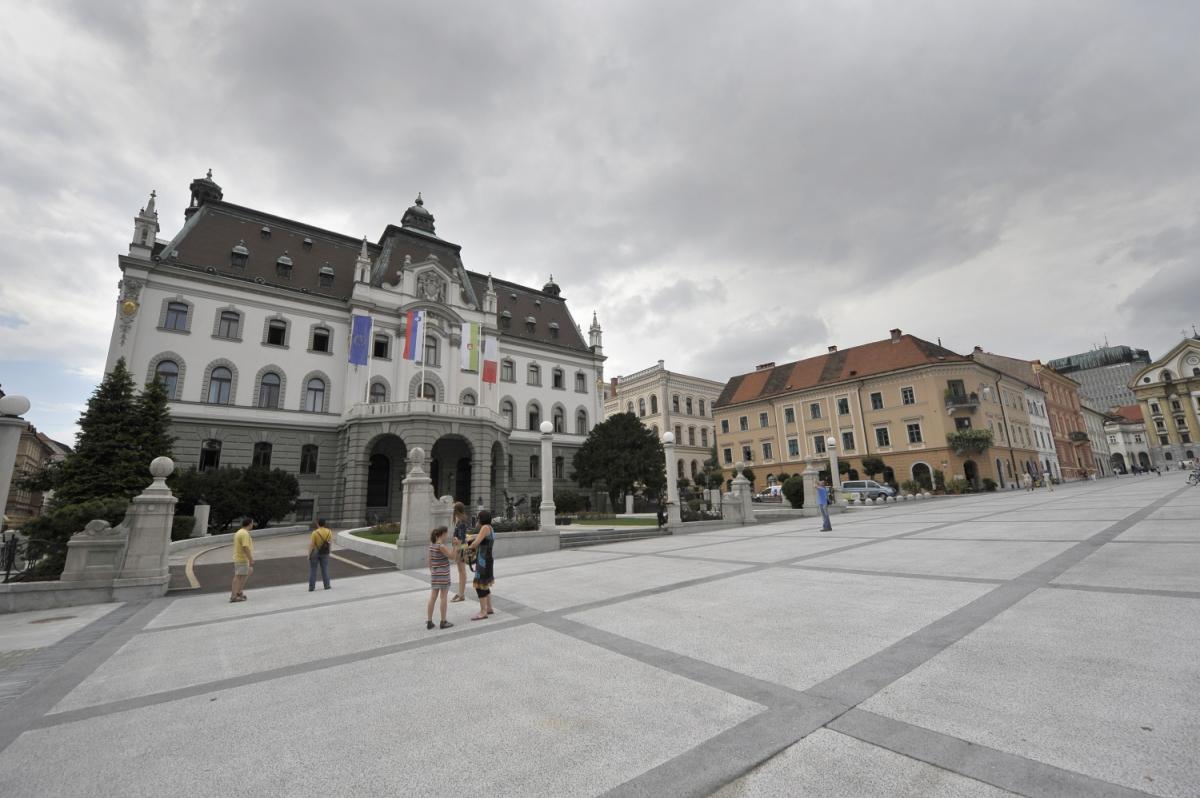
Long before the current building was constructed, the area played an important political role. Since feudal times, a palace on the site housed administrators of Carniola, the Habsburg province in the heart of what is now Slovenia. Over the time, many of the political duties were turned over to a regional council. When Napoleon’s army was defeated, the palace hosted the Congress of Laibach (“Laibach” being the German term for Ljubljana), which redrew the political map of Europe. The 19th century saw a growing awareness of a distinct Slovenian political identity, and by the end of the century, the regional council had become far more Slovenian in character than ever before.
April 14, 1895, changed everything. On that day, a strong earthquake rocked Ljubljana and left several buildings in ruin, including the palace that housed the council. Ivan Hribar, the city’s progressive, innovative mayor, decided to give Ljubljana a new look. He was a passionate admirer of Prague and was determined to bring some of the architectural spirit of that city to the Slovenian capital.
A chronic lack of funds was a problem. Several proposals were rejected for being too expensive, too ornate, or otherwise unsuitable for the site. Finally, a Czech architect living in Slovenia named Jan Vladimír Hráský was chosen to devise a plan for the building. It included several forward-thinking features, including an entrance shared by both the public and political representatives – a novel concept for the time. However, the unusual approach alarmed some of the city councilors, and another architect – Josef Hudetz of Vienna – was brought in to make modifications. The resulting Carniolan Provincial Palace was an elaborate structure that included spacious offices for the governor and a 36-set parliamentary chamber.
After World War I, however, the Slovenian Lands joined the newly created South Slav state and the regional council was abolished. But the birth of the new country saw the creation of the University of Ljubljana – and the former Provincial Palace was chosen as its home.
Almost a century later, the Provincial Place is still the main administrative building of the university – a reminder that both in politics and in higher education, one of Ljubljana’s most iconic building has always been at the heart of Slovenian life.

































































